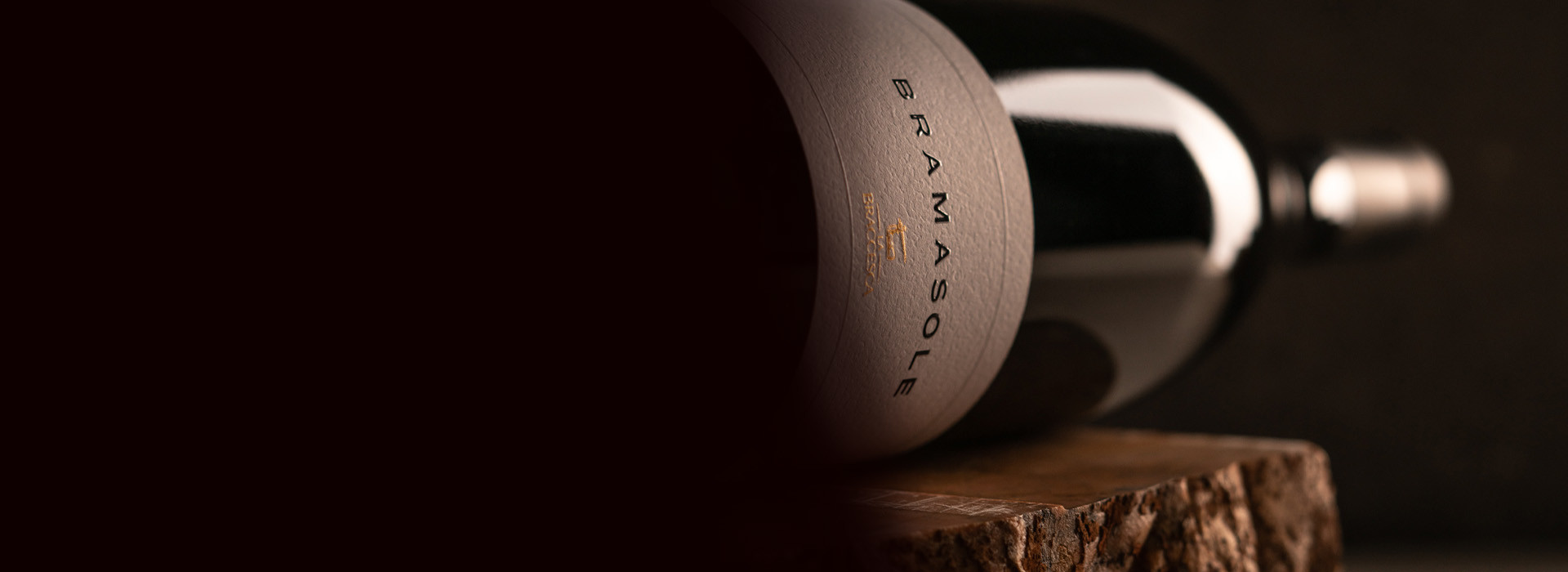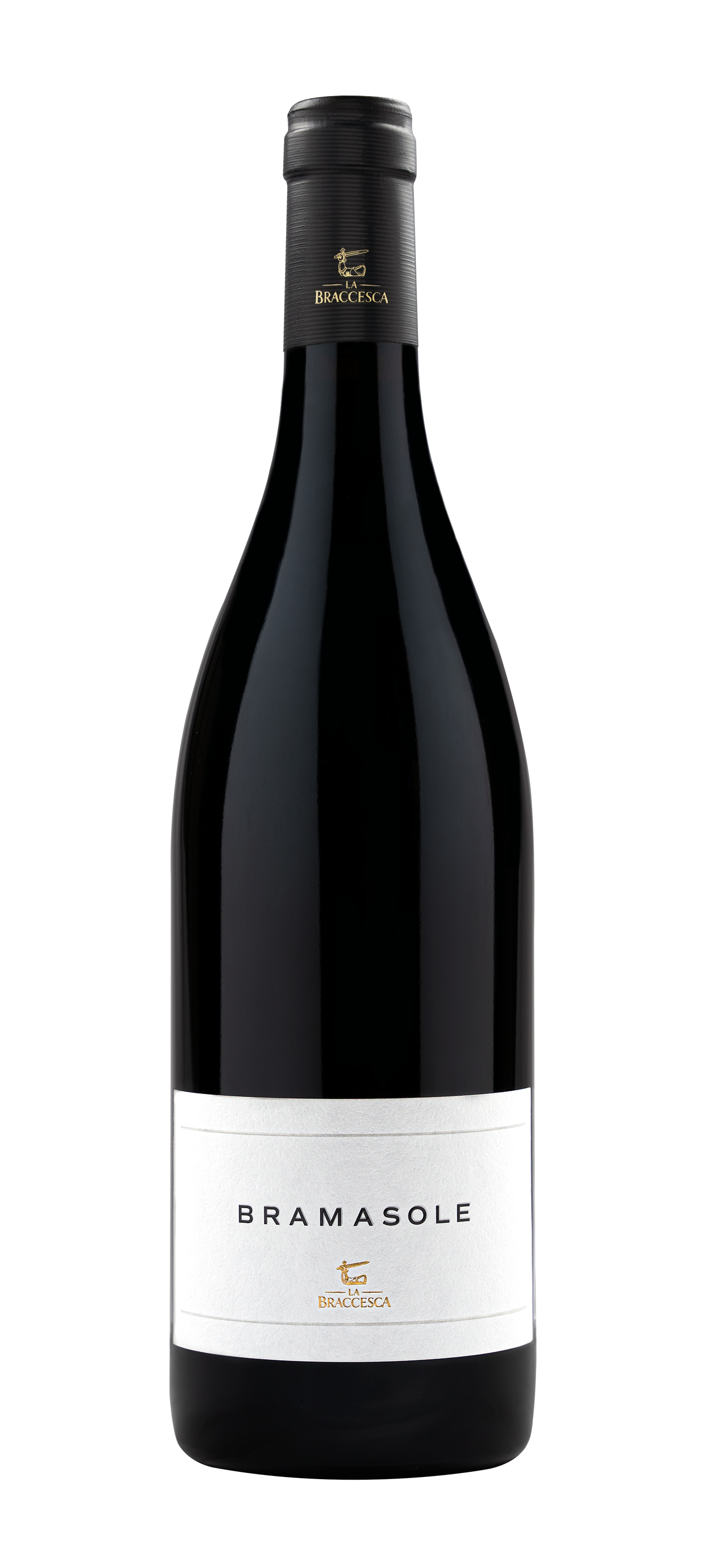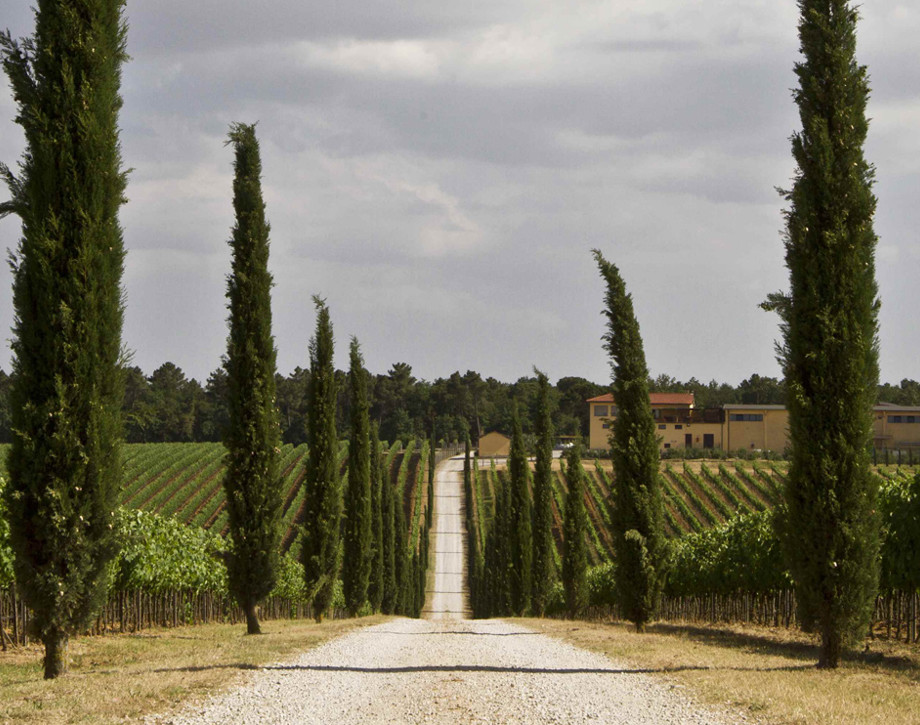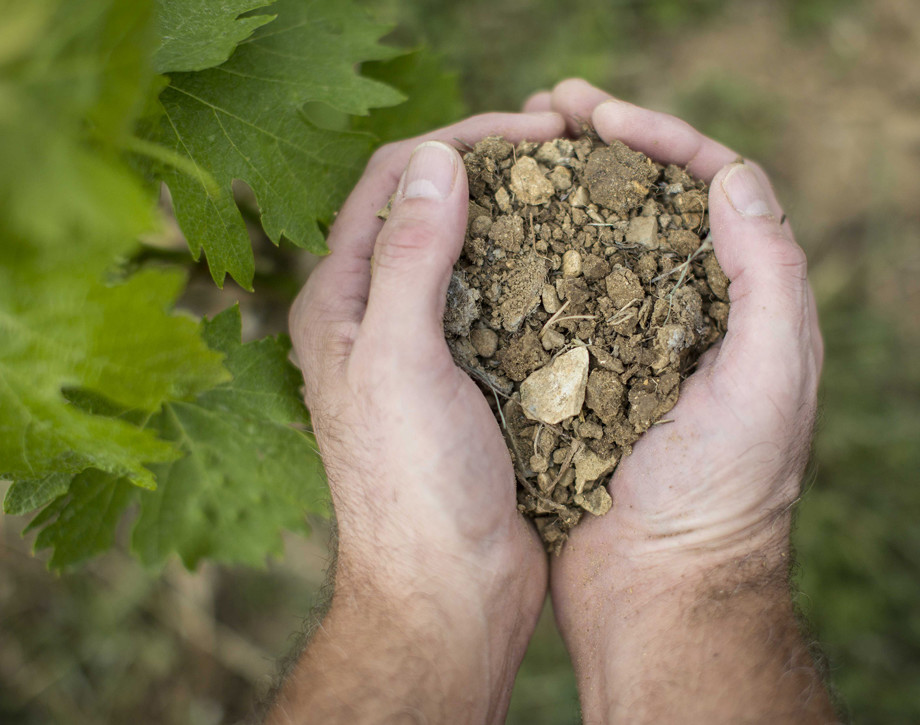Bramasole

Climate
Higher than average temperatures and relatively dry climatic conditions dominated winter and the first half of spring 2017. On April 20th frost hit the vineyards and caused a reduction in yields but did not have any adverse effects on the quality of the grapes. Light rain showers in May were followed by hot dry summer weather; careful canopy management guaranteed optimal development of the berries. Grapes for producing Bramasole were harvested between the 10th and the 14th of September. Without a doubt, the 2017 growing season accentuated Syrah’s varietal expression, as this grape variety thrives in these climatic conditions.
Vinification
Upon arrival in the cellar, harvested grapes were destemmed and gently crushed. The must was transferred into stainless steel tanks and underwent cold soaking for 3 days to extract aromatic compounds and flavors before fermentation, which took place at a controlled temperature of about 28 °C (82 °F). The skins were left in contact with the must for approximately 15 days. The wine went into small French oak barrels, both new and second fill, where malolactic fermentation took place. Bramasole aged for approximately 18 months and was bottled in spring 2019.
Historical Data
The estate’s name comes from the historical farm that once stood there, owned by the Count of Bracci, whose coat of arms appears on the estate’s logo; an arm covered with armor brandishing a sword. The property extends over an area of 508 hectares (1255 acres) and the vineyards cover an area of 340 hectares (840 acres) divided into two blocks: the first is 366 hectares (904 acres) of which 237 (585 acres) are planted with vineyards and is located on the border between the cities of Montepulciano and Cortona. The other block is 142 hectares (350 acres) of which 103 (254 acres) are planted with vineyards, it extends all the way to Montepulciano encompassing three of the most famous parcels of land known for the production of great red wines: Cervognano, Santa Pia and Gracciano. Bramasole is made from the sunniest part of the vineyard in one of Cortona’s best areas for the production of premium quality Syrah. Bramasole is a wine able to evolve over time and reflect this territory and its long-standing winemaking traditions using a new untraditional variety. Bramasole’s first vintage was 2000.
Tasting Notes
Bramasole 2017 is a deep, intense ruby red color. Its nose is soft and elegant with notes of ripe cherries and blackberries that blend with hints of spices and sensations of sweet licorice. Its palate is powerful, rich and well-balanced. Pleasant tannins are well-established and balanced by a smooth texture. The long finish is well defined by after aromas of vanilla and blackberries.
Awards
James Suckling 95/100 USA

The Wine
Bramasole is made from the sunniest part of the vineyard, from the Antinori family’s innovative spirit and from one of Cortona’s best areas for producing premium quality Syrah. Bramasole is a wine able to evolve over time and reflect this territory and its long-standing winemaking traditions using a new untraditional variety. The first vintage to be produced was the 2000 vintage.

Climate
Higher than average temperatures and relatively dry climatic conditions dominated winter and the first half of spring 2017. On April 20th frost hit the vineyards and caused a reduction in yields but did not have any adverse effects on the quality of the grapes. Light rain showers in May were followed by hot dry summer weather; careful canopy management guaranteed optimal development of the berries. Grapes for producing Bramasole were harvested between the 10th and the 14th of September. Without a doubt, the 2017 growing season accentuated Syrah’s varietal expression, as this grape variety thrives in these climatic conditions.
Vinification
Upon arrival in the cellar, harvested grapes were destemmed and gently crushed. The must was transferred into stainless steel tanks and underwent cold soaking for 3 days to extract aromatic compounds and flavors before fermentation, which took place at a controlled temperature of about 28 °C (82 °F). The skins were left in contact with the must for approximately 15 days. The wine went into small French oak barrels, both new and second fill, where malolactic fermentation took place. Bramasole aged for approximately 18 months and was bottled in spring 2019.
Historical Data
The estate’s name comes from the historical farm that once stood there, owned by the Count of Bracci, whose coat of arms appears on the estate’s logo; an arm covered with armor brandishing a sword. The property extends over an area of 508 hectares (1255 acres) and the vineyards cover an area of 340 hectares (840 acres) divided into two blocks: the first is 366 hectares (904 acres) of which 237 (585 acres) are planted with vineyards and is located on the border between the cities of Montepulciano and Cortona. The other block is 142 hectares (350 acres) of which 103 (254 acres) are planted with vineyards, it extends all the way to Montepulciano encompassing three of the most famous parcels of land known for the production of great red wines: Cervognano, Santa Pia and Gracciano. Bramasole is made from the sunniest part of the vineyard in one of Cortona’s best areas for the production of premium quality Syrah. Bramasole is a wine able to evolve over time and reflect this territory and its long-standing winemaking traditions using a new untraditional variety. Bramasole’s first vintage was 2000.
Tasting Notes
Bramasole 2017 is a deep, intense ruby red color. Its nose is soft and elegant with notes of ripe cherries and blackberries that blend with hints of spices and sensations of sweet licorice. Its palate is powerful, rich and well-balanced. Pleasant tannins are well-established and balanced by a smooth texture. The long finish is well defined by after aromas of vanilla and blackberries.
Awards
James Suckling 95/100 USA

Tenuta La Braccesca
La Braccesca spreads over 508 hectares where the ancient farm of the Bracci counts once stood, hence the name of the estate and its coat of arms: an arm covered in armour holding a sword. Since 1990 the Marchesi Antinori have owned the estate. The total surface area of the vineyards is 334 hectares divided into two parts: the first, of 232 hectares is located on the border between the municipalities of Montepulciano and Cortona. The other body, 102 hectares of which are planted with vines, extends as far as Montepulciano between three of the most renowned sub-zones for the production of great red wines: Cervognano, Santa Pia and Gracciano.

Soil
Clay loam


















